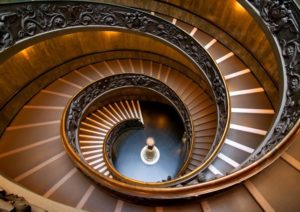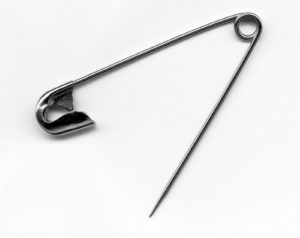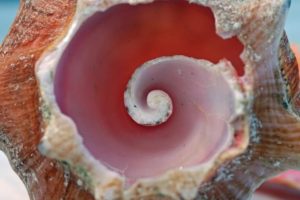Biomimicry in Engineering
This lesson focuses on the concept of biomimicry and students learn how engineers have incorporated structures and methods from the living world in products and solutions for all industries. Students work in teams to develop a structure or system based on an example in nature that would help people living on the moon.
- Learn about biomimicry.
- Learn about engineering design and redesign.
- Learn about patents.
- Learn how engineering can help solve society’s challenges.
- Learn about teamwork and problem solving.
Age Levels: 8-18
Build Materials (For each team)
Required Materials
- Paper
- Pen/Pencil
- Internet access (optional, though helpful).

Design Challenge
You are part of a team of engineers given the challenge of developing a system or building that will be placed on the moon. The system or building should be based on a product or system found in nature. You’ll research ideas online, then work as a team to develop a sketch of your design. You’ll also consider patenting your idea.
Criteria
- Design to be placed on the moon.
- Design must be based on a product or system found in nature.
Constraints
- Use only the materials provided.
- Break class into teams of 2-4.
- Hand out the Biomimicry in Engineering worksheet, as well as some sheets of paper for sketching designs.
- Discuss the topics in the Background Concepts Section.
- Review the Engineering Design Process, Design Challenge, Criteria, Constraints and Materials.
- Instruct students to start brainstorming and sketching their designs.
- Provide each team with their materials.
- Explain that students must read the materials provided to them. Instruct students to consider how nature engineers a product — like a leaf. Ask them to think about the functionality of shapes such as a conch shell or palm leaf, and how they support the structure. Another point might be to look at how a lotus leaf beads up water…and consider that it is the tiny “hairs” on the surface of the leaf that suspend water beads.
If they have access to the internet, ask students to visit Asknature.org. They should take some time to explore the various challenges and solutions nature has to offer. For example, they might search for “store oxygen” or “termites” or anything related to what they are considering working on. - Then, instruct students to sketch a detailed diagram showing several views of their system or building, similar to what might be required for a patent. They should be sure to list the materials they might need and include a paragraph or more describing how their invention works and how it relates to nature….what makes it an example of Biomimicry?
- Announce the amount of time they have to plan their design (1 hour recommended).
- Use a timer or an on-line stopwatch (count down feature) to ensure you keep on time. (www.online-stopwatch.com/full-screen-stopwatch). Give students regular “time checks” so they stay on task. If they are struggling, ask questions that will lead them to a solution quicker.
- Student teams present their ideas, sketches, and connection to Biomimicry to the class.
- As a class, discuss the student reflection questions.
- For more content on the topic, see the “Digging Deeper” section.
Student Reflection (engineering notebook)
- What was the most interesting proposed use of biomimicry that was developed in your class presentations? Why?
- Do you think that your design is patentable? Is it unique enough to be approved?
- Do you think your product, building, or system would work if manufactured?
- Do you think that you could raise funds to pay for manufacturing? How would you go about raising funds?
- Do you think that many engineers explore solutions from nature into their inventions?
- Did you think that working as a team made this project easier or harder? Why?
Time Modification
The lesson can be done in as little as 1 class period for older students. However, to help students from feeling rushed and to ensure student success (especially for younger students), split the lesson into two periods giving students more time to brainstorm, test ideas and finalize their design. Conduct the testing and debrief in the next class period.
What Is a Patent?
A patent for an invention is the grant of a property right to the inventor, issued by a country’s Patent and Trademark Office. The procedure for granting patents, the requirements placed on the patentee, and the extent of the exclusive rights vary widely between countries according to national laws and international agreements. In the United States, the term of a new patent is 20 years from the date on which the application for the patent was filed or, in special cases, from the date an earlier related application was filed, subject to the payment of maintenance fees. Utility patents protect useful processes, machines, articles of manufacture, and compositions of matter. Some examples: fiber optics, computer hardware, medications. Design patents guard the unauthorized use of new, original, and ornamental designs for articles of manufacture. The look of a specific athletic shoe or a bicycle helmet are protected by design patents. Plant patents are the way we protect invented or discovered asexually reproduced plant varieties. Hybrid tea roses, Silver Queen corn, and Better Boy tomatoes are all types of plant patents.
Famous Patents

Safety Pin: The patent for the “safety pin” was issued on April 10, 1849 to Walter Hunt, of New York. Hunt’s pin was made from one piece of wire, which was coiled into a spring at one end and a separate clasp and point at the other end, allowing the point of the wire to be forced by the spring into the clasp.
Dishwasher: A patent for the first practical dish washing machine was issued December 28, 1886 to Josephine Garis Cochran of Shelbyville, Illinois. She was wealthy, entertained often, and wanted a machine that could wash dishes quickly, and without breaking them. When she couldn’t find one, she built it herself.
How to Register a Patent
Each country, or sometimes a region has its own patent procedures. For example, in Europe, there is the European Patent Office; in the United States, the U.S. Patent and Trademark Office manages the patent process. Wherever you are, you have to design your product on paper or on a computer and specifically show why your design is different from others. On the left is one of the first drawings of the Coca Cola bottle, and on the right, is a copy of the patent design. You also need to check to see if someone else has already invented what you think you did! Try searching for a trademark at www.uspto.gov/patents.
What is Biomimicry?
People have always been inspired by nature — and engineers are no exception! Throughout history, structures, systems, and materials developed by engineers have had roots in natural structures, systems, and materials. For example, the echolocation used by bats in the dark have helped lead to improvements in cane technology for blind people. Others have looked to the methods beetles use to draw water from fog, or how the structure of a lotus leaf can help keep moisture away from the surface — this has led to changing the surface of fabrics at the nanoscale so they too repel water. And, gecko tape mimics the feed of a gecko lizard by including nanoscopic hairs. Other engineers have looked to the way tower building termites have structures designed to maintain a constant temperature in climates with wide temperature swings. The Eastgate building in Harare, Zimbabwe has passive, self-cooling systems modeled on termite mounds. The building, a mixture of offices, shops and car parking, uses an average of 90 per cent less energy than a comparable structure saving more than $3.5 million since opening in the 1990s.

How butterflies’ wings could cut bank fraud
University of Cambridge scientists and engineers recently discovered a way of mimicking the stunningly bright and beautiful colours found on the wings of tropical butterflies. The findings could have important applications in the security printing industry, helping to make bank notes and credit cards harder to forge. Mimicking nature’s most colourful, eye-catching surfaces has proved elusive. This is partly because rather than relying on pigments, these colours are produced by light bouncing off microscopic structures on the insects’ wings. Mathias Kolle, working with Professor Ullrich Steiner and Professor Jeremy Baumberg of the University of Cambridge, studied the Indonesian Peacock or Swallowtail butterfly (Papilio blumei) (Image at right is courtesy: University of Cambridge), whose wing scales are composed of intricate, microscopic structures that resemble the inside of an egg carton. Because of their shape and the fact that they are made up of alternate layers of cuticle and air, these structures produce intense colours. Using a combination of nanofabrication procedures – including self-assembly and atomic layer deposition – Kolle and his colleagues made structurally identical copies of the butterfly scales, and these copies produced the same vivid colours as the butterflies’ wings. As well as helping scientists gain a deeper understanding of the physics behind these butterflies’ colours, being able to mimic them has promising applications in security printing.
China Winter Olympics
The National Aquatic Center in Beijing, China structure stands on enormous twisted beams around the exterior similar to a nest. The designing team studied some countless natural nests for understanding the weaving pattern of the threads. Some hundreds of models were created for the design.
- Biomimicry: When people use ideas from nature to solve problems.
- Criteria: Conditions that the design must satisfy like its overall size, etc.
- Engineers: Inventors and problem-solvers of the world. Twenty-five major specialties are recognized in engineering (see infographic).
- Engineering Design Process: Process engineers use to solve problems.
- Engineering Habits of Mind (EHM): Six unique ways that engineers think.
- Iteration: Test & redesign is one iteration. Repeat (multiple iterations).
- Patent: The grant of a property right to the inventor, issued by a country’s Patent and Trademark Office.
- Patentee: Inventor who receives a patent for their invention.
- Prototype: A working model of the solution to be tested.
Internet Connections
Recommended Reading
- Biomimicry: Innovation Inspired by Nature (ISBN: 978-0060533229)
- Biomimetics: Biologically Inspired Technologies (ISBN: 978-0849331633)
- The Gecko’s Foot: Bio- Inspiration: Engineering New Materials from Nature
(ISBN: 978-0393337976) - Biomimicry for Optimization, Control, and Automation (ISBN: 978-1852338046)
- How to Make Patent Drawings (ISBN: 978-1413306538)
Writing Activity
Write an essay or a paragraph about one example of how engineers have looked to nature to help find solutions to societal challenges.
Alignment to Curriculum Frameworks
Note: All lesson plans in this series are aligned to the National Science Education Standards which were produced by the National Research Council and endorsed by the National Science Teachers Association, and if applicable, also to the International Technology Education Association’s Standards for Technological Literacy or the National Council of Teachers of Mathematics’ Principles and Standards for School Mathematics.
National Science Education Standards Grades K-4 (ages 4-9)
CONTENT STANDARD A: Science as Inquiry
As a result of activities, all students should develop
- Abilities necessary to do scientific inquiry
- Understanding about scientific inquiry
CONTENT STANDARD C: Life Science
As a result of the activities, all students should develop understanding of
- The characteristics of organisms
- Organisms and environments
CONTENT STANDARD D: Earth and Space Science
As a result of their activities, all students should develop an understanding of
- Properties of earth materials
CONTENT STANDARD E: Science and Technology
As a result of activities, all students should develop
- Abilities of technological design
- Abilities to distinguish between natural objects and objects made by humans
CONTENT STANDARD F: Science in Personal and Social Perspectives
As a result of activities, all students should develop understanding of
- Science and technology in local challenges
National Science Education Standards Grades 5-8 (ages 10-14)
CONTENT STANDARD A: Science as Inquiry
As a result of activities, all students should develop
- Abilities necessary to do scientific inquiry
- Understandings about scientific inquiry
CONTENT STANDARD C: Life Science
As a result of their activities, all students should develop understanding of
- Structure and function in living systems
- Diversity and adaptations of organisms
CONTENT STANDARD E: Science and Technology
As a result of activities in grades 5-8, all students should develop
- Abilities of technological design
- Understandings about science and technology
CONTENT STANDARD F: Science in Personal and Social Perspectives
As a result of activities, all students should develop understanding of
- Science and technology in society
CONTENT STANDARD G: History and Nature of Science
As a result of activities, all students should develop understanding of
- History of science
National Science Education Standards Grades 9-12 (ages 14-18)
CONTENT STANDARD A: Science as Inquiry
As a result of activities, all students should develop
- Abilities necessary to do scientific inquiry
- Understandings about scientific inquiry
CONTENT STANDARD B: Physical Science
As a result of their activities, all students should develop understanding of
- Structure and properties of matter
CONTENT STANDARD C: Life Science
As a result of their activities, all students should develop understanding of
- Matter, energy, and organization in living systems
CONTENT STANDARD E: Science and Technology
As a result of activities, all students should develop
- Abilities of technological design
- Understandings about science and technology
CONTENT STANDARD F: Science in Personal and Social Perspectives
As a result of activities, all students should develop understanding of
- Science and technology in local, national, and global challenges
CONTENT STANDARD G: History and Nature of Science
As a result of activities, all students should develop understanding of
- Historical perspectives
Standards for Technological Literacy – All Ages
The Nature of Technology
- Standard 1: Students will develop an understanding of the characteristics and scope of technology.
- Standard 3: Students will develop an understanding of the relationships among technologies and the connections between technology and other fields of study.
Technology and Society
- Standard 4: Students will develop an understanding of the cultural, social, economic, and political effects of technology.
- Standard 6: Students will develop an understanding of the role of society in the development and use of technology.
- Standard 7: Students will develop an understanding of the influence of technology on history.
Design
- Standard 8: Students will develop an understanding of the attributes of design.
- Standard 9: Students will develop an understanding of engineering design.
- Standard 10: Students will develop an understanding of the role of troubleshooting, research/development, invention/innovation, and experimentation in problem solving.
Abilities for a Technological World
- Standard 11: Students will develop abilities to apply the design process.
- Standard 13: Students will develop abilities to assess the impact of products and systems.
People have always been inspired by nature — and engineers are no exception! Throughout history, structures, systems, and materials developed by engineers have had roots in natural structures, systems, and materials. For example, the echolocation used by bats in the dark have helped lead to improvements in cane technology for blind people. Others have looked to the methods beetles use to draw water from fog, or how the structure of a lotus leaf can help keep moisture away from the surface — this has led to changing the surface of fabrics at the nanoscale so they too repel water. And, gecko tape mimics the feed of a gecko lizard by including nanoscopic hairs. Other engineers have looked to the way tower building termites have structures designed to maintain a constant temperature in climates with wide temperature swings. The Eastgate building in Harare, Zimbabwe has passive, self-cooling systems modeled on termite mounds. The building, a mixture of offices, shops and car parking, uses an average of 90 per cent less energy than a comparable structure saving more than $3.5 million since opening in the 1990s.
How butterflies’ wings could cut bank fraud
University of Cambridge scientists and engineers recently discovered a way of mimicking the stunningly bright and beautiful colours found on the wings of tropical butterflies. The findings could have important applications in the security printing industry, helping to make bank notes and credit cards harder to forge. Mimicking nature’s most colourful, eye-catching surfaces has proved elusive. This is partly because rather than relying on pigments, these colours are produced by light bouncing off microscopic structures on the insects’ wings. Mathias Kolle, working with Professor Ullrich Steiner and Professor Jeremy Baumberg of the University of Cambridge, studied the Indonesian Peacock or Swallowtail butterfly (Papilio blumei) (Image at right is courtesy: University of Cambridge), whose wing scales are composed of intricate, microscopic structures that resemble the inside of an egg carton. Because of their shape and the fact that they are made up of alternate layers of cuticle and air, these structures produce intense colours. Using a combination of nanofabrication procedures – including self-assembly and atomic layer deposition – Kolle and his colleagues made structurally identical copies of the butterfly scales, and these copies produced the same vivid colours as the butterflies’ wings. As well as helping scientists gain a deeper understanding of the physics behind these butterflies’ colours, being able to mimic them has promising applications in security printing.
China Winter Olympics
The National Aquatic Center in Beijing, China structure stands on enormous twisted beams around the exterior similar to a nest. The designing team studied some countless natural nests for understanding the weaving pattern of the threads. Some hundreds of models were created for the design.

Engineering Teamwork and Planning
You are part of a team of engineers given the challenge of developing a system or building that would be based on the moon that is based on a product or system found in nature. You’ll research ideas online, then work as a team to develop a drawn diagram. You’ll also consider patenting your idea, and present your designs to your class.
Research Phase
Read the materials provided to you by your teacher. If you have access to the internet, also visit Asknature.org, and take some time to explore the various challenges and solutions nature has to offer. For example, you might search for “store oxygen” or “termites” or anything related to what you are considering working on. Gain ideas by seeing what others are working on.
Planning and Design Phase
Leonardo da Vinci both studied how birds fly and also drew intricate illustrations of his designs in preparation for construction. In the same way, George de Mestral, a Swiss engineer hiking in the Alps found that many burs from a burdock tree were sticking to his clothing….he later invented what is now known as Velcro. But he also had to draw his ideas in order to gain a patent for his invention. You can see one page of his patent to the right. Mechanizing the process of weaving the hooks took eight years, and it took another year to create the loom that trimmed the loops after weaving them. It took him about a decade to create a mechanized process that worked. He submitted his idea for patent in Switzerland in 1951 and the patent was granted in 1955.
Now it is your turn! On a separate piece of paper draw a detailed diagram showing several views of your system, similar to what might be required for a patent. Present this plan to your class. Be sure to list the materials you might need and include a paragraph or more describing how your invention works and how it relates to nature….what makes it an example of Biomimicry?
Presentation Phase
Present your ideas, drawings, and connection to Biomimicry to the class, the complete the reflection sheet.
Reflection
Complete the reflection questions below:
- What was the most interesting proposed used of biomimicry that was developed in your class presentations? Why?
- Do you think that your design is patentable? Is it unique enough to be approved?
- Do you think your product, building, or system would work if manufactured?
- Do you think that you could raise funds to pay for manufacturing? How would you go about raising funds?
- Do you think that many engineers explore solutions from nature into their inventions?
- Did you think that working as a team made this project easier or harder? Why?





 Industrial Engineering
Industrial Engineering
 Computer Engineering
Computer Engineering













